
10 Ways to Refresh Your Yard
Transform your backyard into a sanctuary for eating, working, exercise, and entertainment.
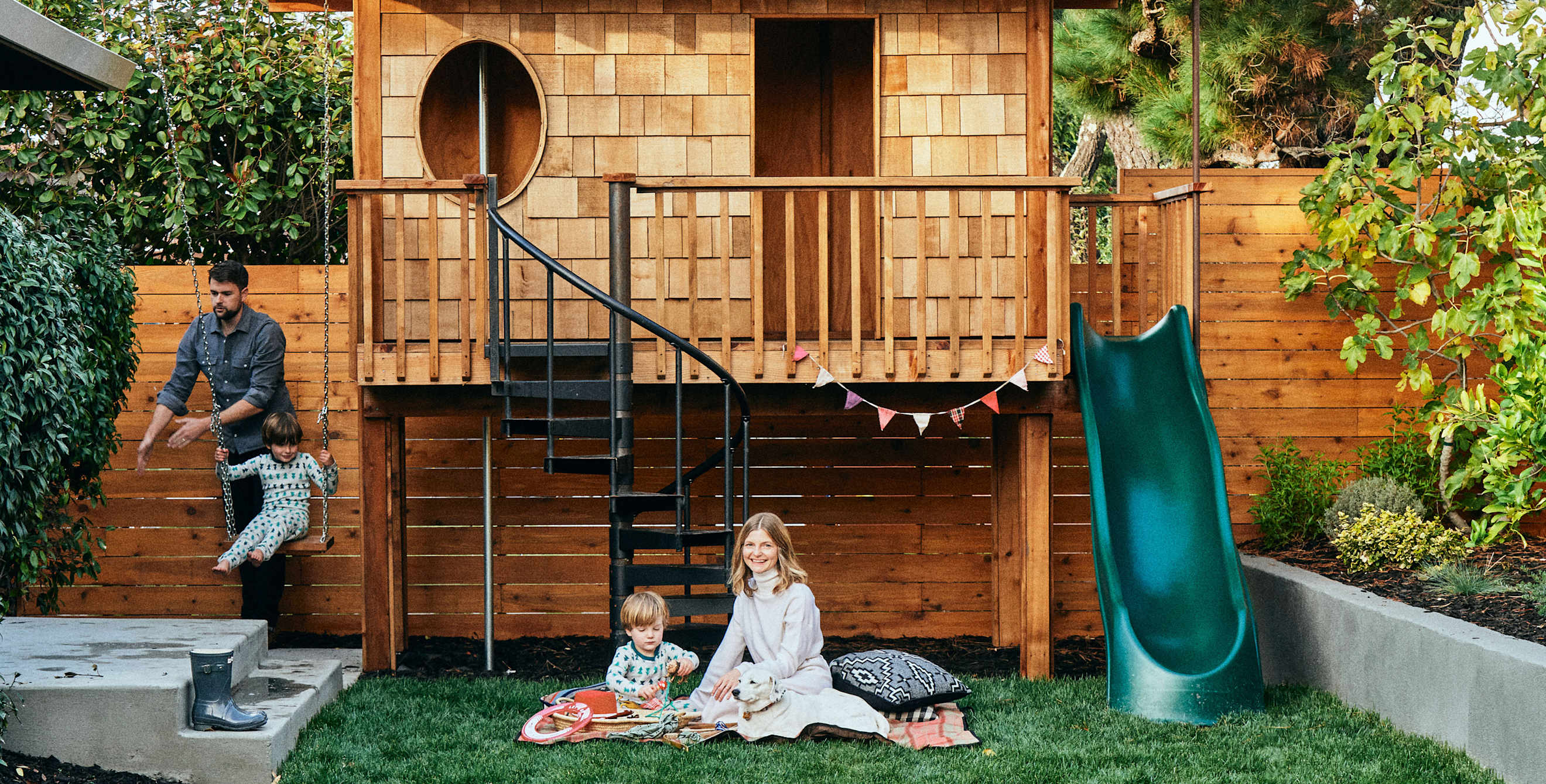
If you’ve spent the last year looking for ways to improve your outside living space, you’re not alone. Outdoor furniture sales have been booming. Retailers throughout the West are seeing an increased demand for outdoor seating, “she sheds,” grilling tools, and gardening items, as people convert their yards and patios into functional living spaces.
While placing some furniture outside is relatively simple, there’s more to building the habitual use of backyarding into your daily life. A few months into the pandemic, my family decided to keep backyard chickens. After careful consideration, we determined the five hens would benefit our family in multiple ways: They provide companionship to my two young children, not to mention eggs for us all, and tending to the flock gives us another reason to spend time outdoors.
Chickens may not be for everyone, but there are plenty of different ways to create a space that meets the needs of your household. Here are 10 ways to maximize the use of your yard space year-round, from edible gardens and alfresco offices to outdoor showers and kitchens.
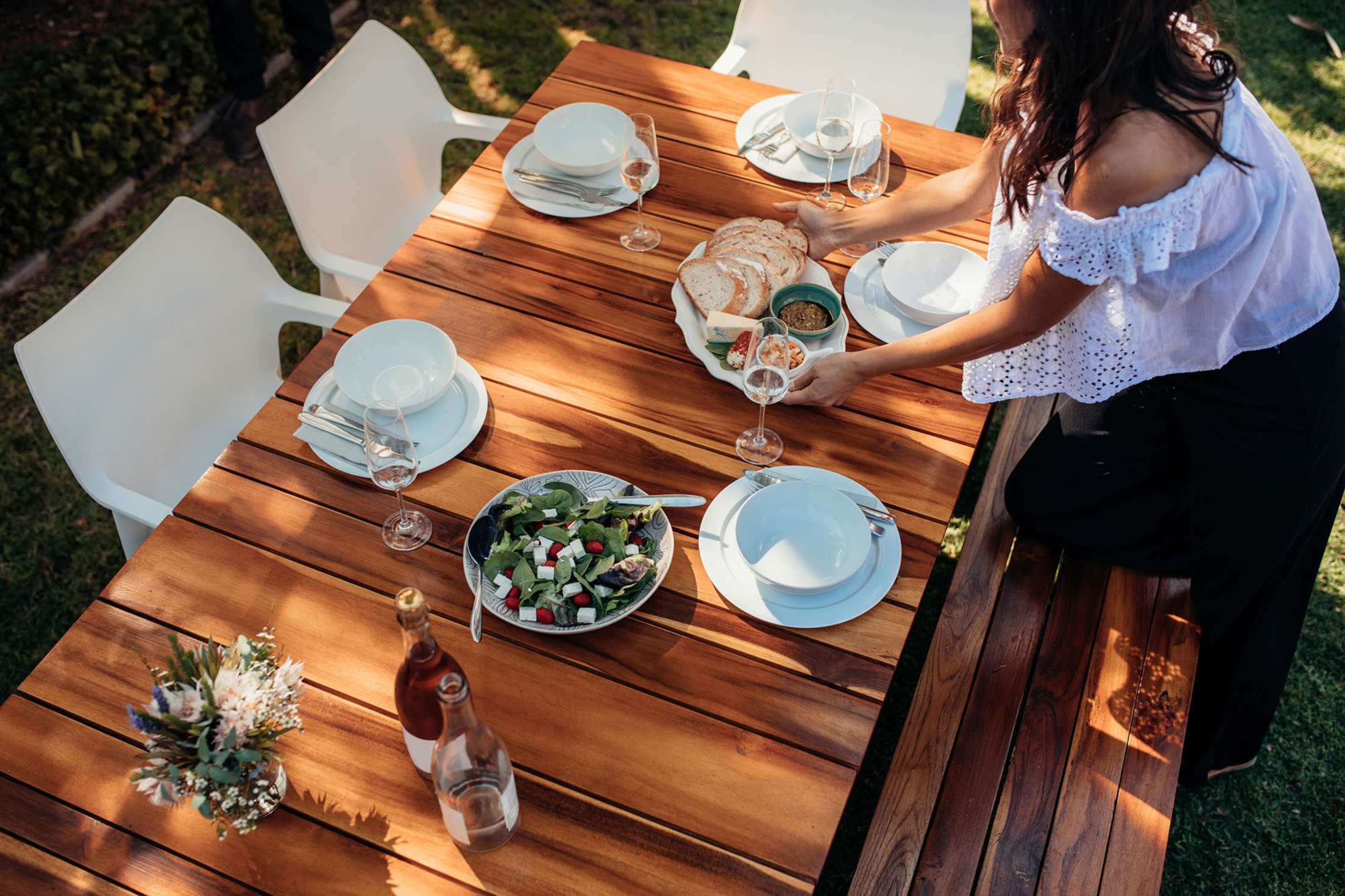
Create an inviting outdoor dining space.
Outdoor Dining Areas
It’s easy to plop a dining table outside and call it a day, according to interior designer Raili Clasen, based in Corona del Mar, California. But if you want to create a comfortable, cozy space that you’re drawn to use on a regular basis, Clasen advises finding a spot in your backyard that could have a bit of room-like ambiance. Consider an area under a canopy of full-grown trees, or a flat surface surrounded by shrubs and flowers. Even potted plants and trees can do the trick, she says.
Another key to everyday alfresco dinners is warm overhead lighting. It’s relatively inexpensive to drape a few strands of café lights on fences, trees, or exterior structures; if those aren’t an option, you can easily install nine-foot light poles to customize your space. “Now, all of a sudden, you have a full-on room,” says Clasen. Just be sure to consider what the weather might have in store. Even at Clasen’s Southern California home, nights can get chilly, so she keeps a basket stocked with cozy throws for her guests to use. That way, everyone stays warm and the party never has to end early.
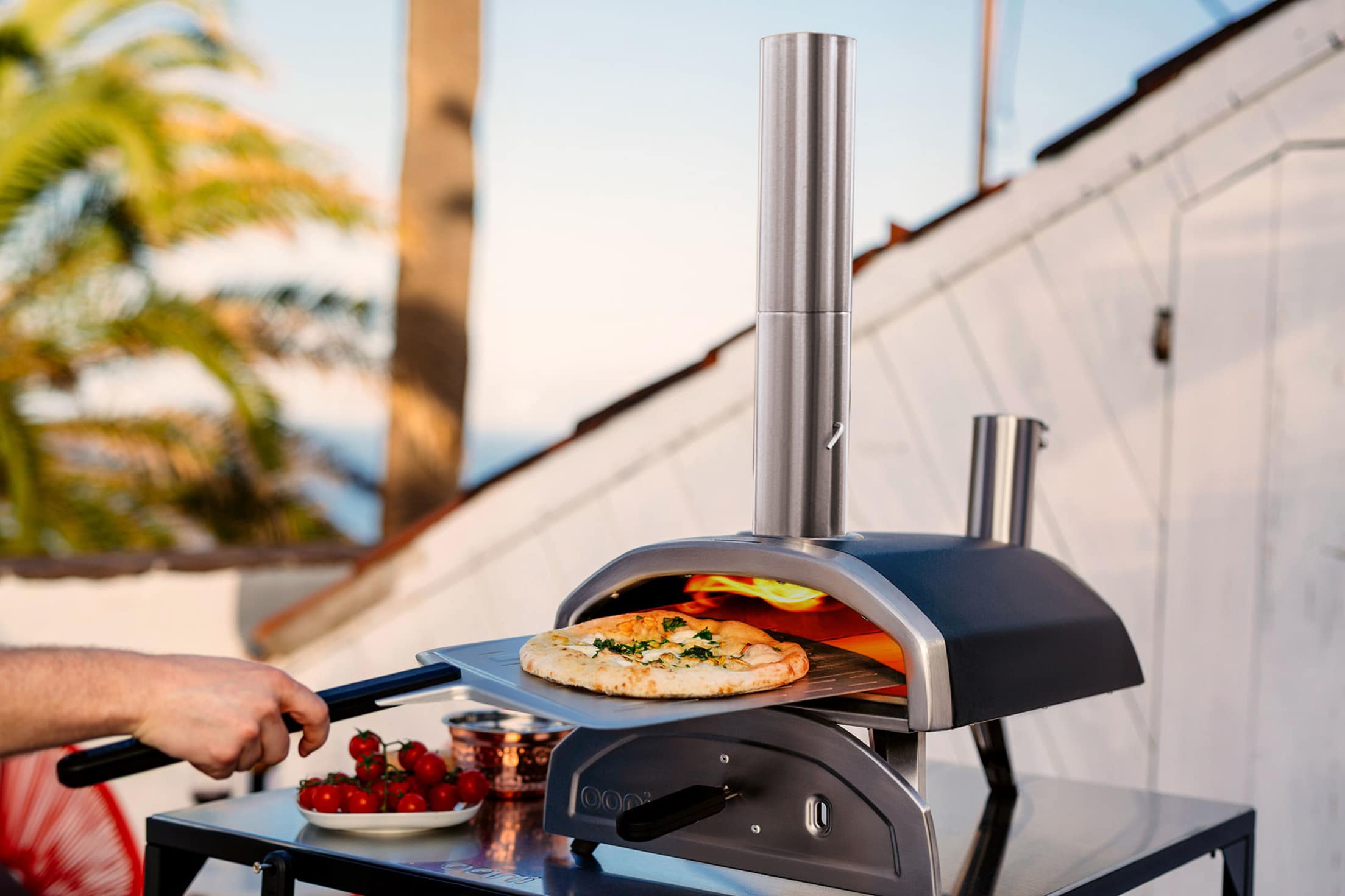
An outdoor kitchen can be as simple as a pizza oven or grill.
Outdoor Kitchen
There’s more to cooking outdoors than simply firing up the grill, and it’s easier than ever to be imaginative when customizing a space to cook and socialize over meals. “There has been an influx of people wanting help transforming their backyards into usable spaces,” says Christina Valencia, cofounder of the Sacramento-based design studio Colossus Mfg. “We’ve received a number of requests for smokers, wood pellet grills, and built-in stations for [grills such as] Big Green Eggs. People want to create an experience around outdoor cooking nowadays, and investing in an outdoor space makes you want to linger outside.”
While outdoor kitchens are traditionally built as permanent fixtures, modular pieces make custom cookeries more affordable for homeowners and also accommodate renters, who can relocate the pieces later. In addition to modular prep tables, refrigeration units, storage cabinets, and shelving, options such as sink stations, bars on casters, and even portable pizza ovens make it easier than ever to create a space truly unique to your cooking style.
When ordering or building exterior kitchen stations, check that the materials are made from rot- and corrosion-resistant materials. After each use of your outdoor kitchen, clean all surfaces thoroughly, just as you would your indoor eating spaces. And be sure to use a weatherproof cover to protect each item from the elements. Taking these steps will ensure the investment in your outdoor kitchen lasts for years to come.
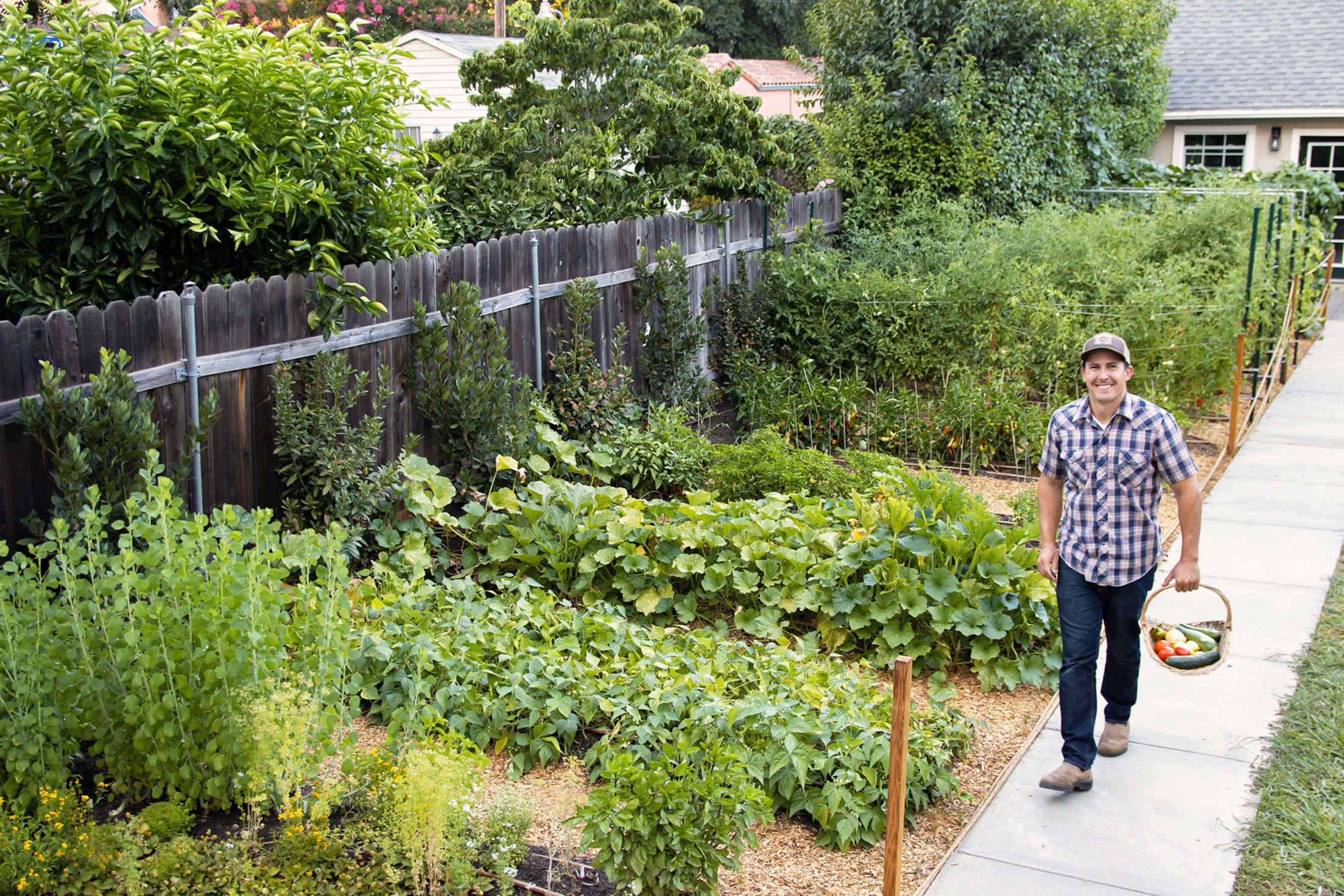
Kyle Hagerty's beautiful urban edible garden.
Edible Garden
Kyle Hagerty, the Sacramento gardener behind the Instagram account Urban Farmstead and its companion YouTube channel, says the best way to create your first edible garden is to start small. “That approach lets you get your feet wet and helps you figure out what’s working and what’s not, what you like to eat and what you don’t like,” he says. “You’ll also learn if you actually enjoy gardening.”
The priority, says Hagerty, is sunlight. “If your backyard is loaded with trees and everything is shaded, put your vegetable garden in the front yard. It doesn’t need to look like a vegetable garden, with rows or raised beds, because at the end of the day they’re all just plants.” In his own front yard, Hagerty incorporates garlic, herbs, kiwi vines, and pruned citrus into his landscaping.
After the sunlight, it’s all about the soil. “It’s really the soil that’s doing all the work,” says Hagerty. Amending soil with organic nutrients and compost in the spring and fall will break up clay and help sandy soil hold moisture.
If you decide to add raised beds, Hagerty recommends using a rot-resistant wood such as redwood instead of pressure-treated or chemically treated wood, which can leach into the soil. He digs garden beds a minimum of 12 inches deep, then adds a layer of cardboard directly over the dirt to deter weeds. Finally, he fills each with a good amount of soil and maps out his edibles, considering the eventual size of each plant. “New gardeners,” he says “tend to plant things too close together or in the wrong spot.” This can lead to overcrowding or block sun from some of the plants.
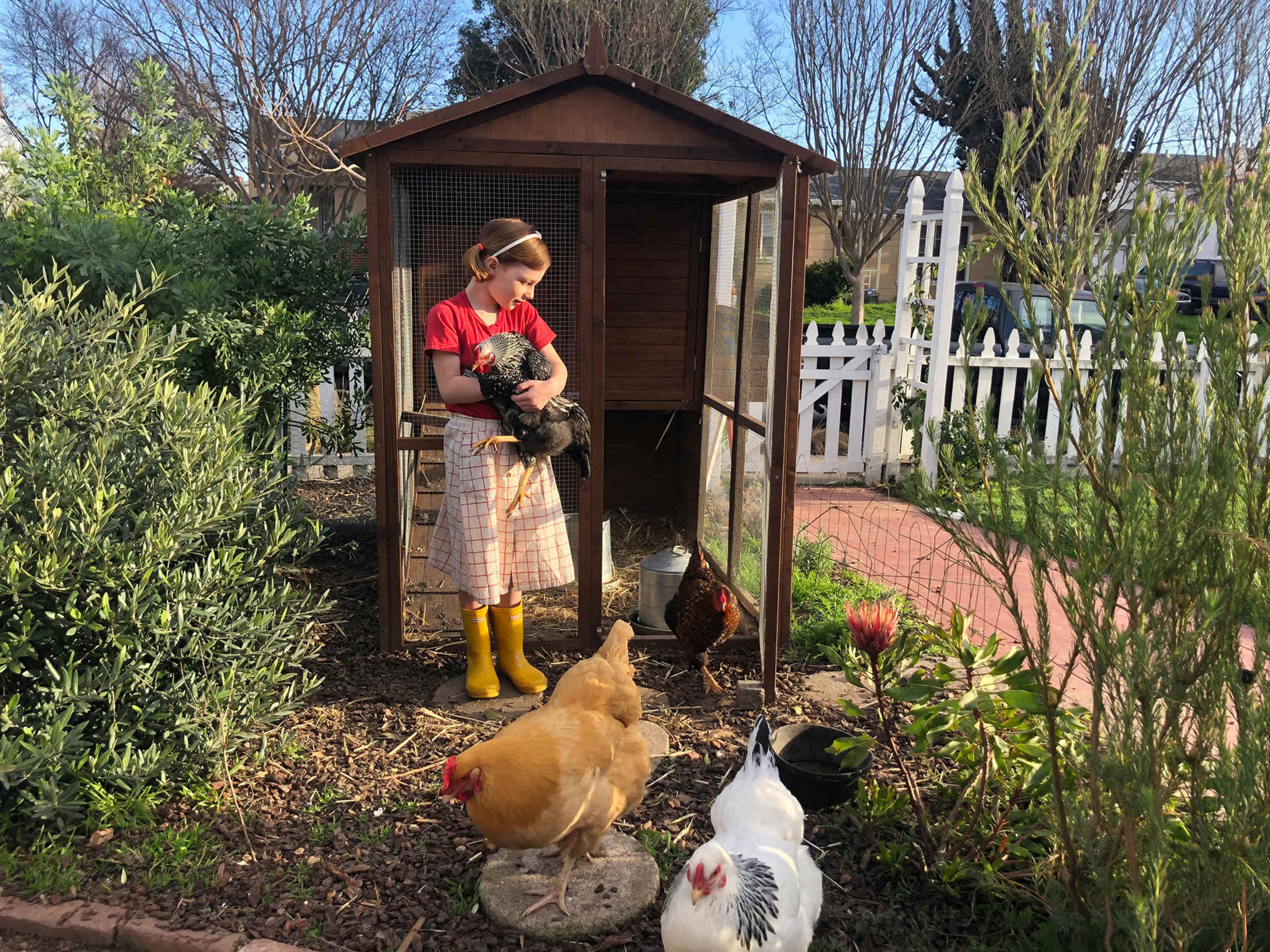
The writer's family chickens.
Backyard Chickens
As people began adopting dogs in unprecedented numbers at the start of the pandemic, others were adding flocks of chickens to their suburban backyards. Ordinances vary from city to city— always check your local laws—but some of them now permit residents to keep up to four chickens.
For our backyard birds, we visited our local feed store to shop for the kinds of chickens we had in mind. If your goal is to provide eggs for your household, consider breeds that are more productive, such as the Barred Plymouth Rock, Speckled Sussex, or Rhode Island Red. If you’re more interested in the experience, you might select chickens that lay colorful eggs: Wellsummers lay a deep-brown speckled egg, and Easter Eggers turn out beautiful green and blue pastel eggs.
While chicks need to live inside for up to six weeks, adults will require a predator-proof coop where they can lay eggs and sleep safely at night. You can purchase plans for a chicken coop online and build your own, or buy a premade coop. During the day, chickens like to roam and forage, so make sure they have plenty of space outside their coop to dig for grubs, worms, and other bugs. If you have a garden, they won’t hesitate to help themselves to your plants, so it’s important to designate a zone in your outdoor space where you won’t mind their nibbling.
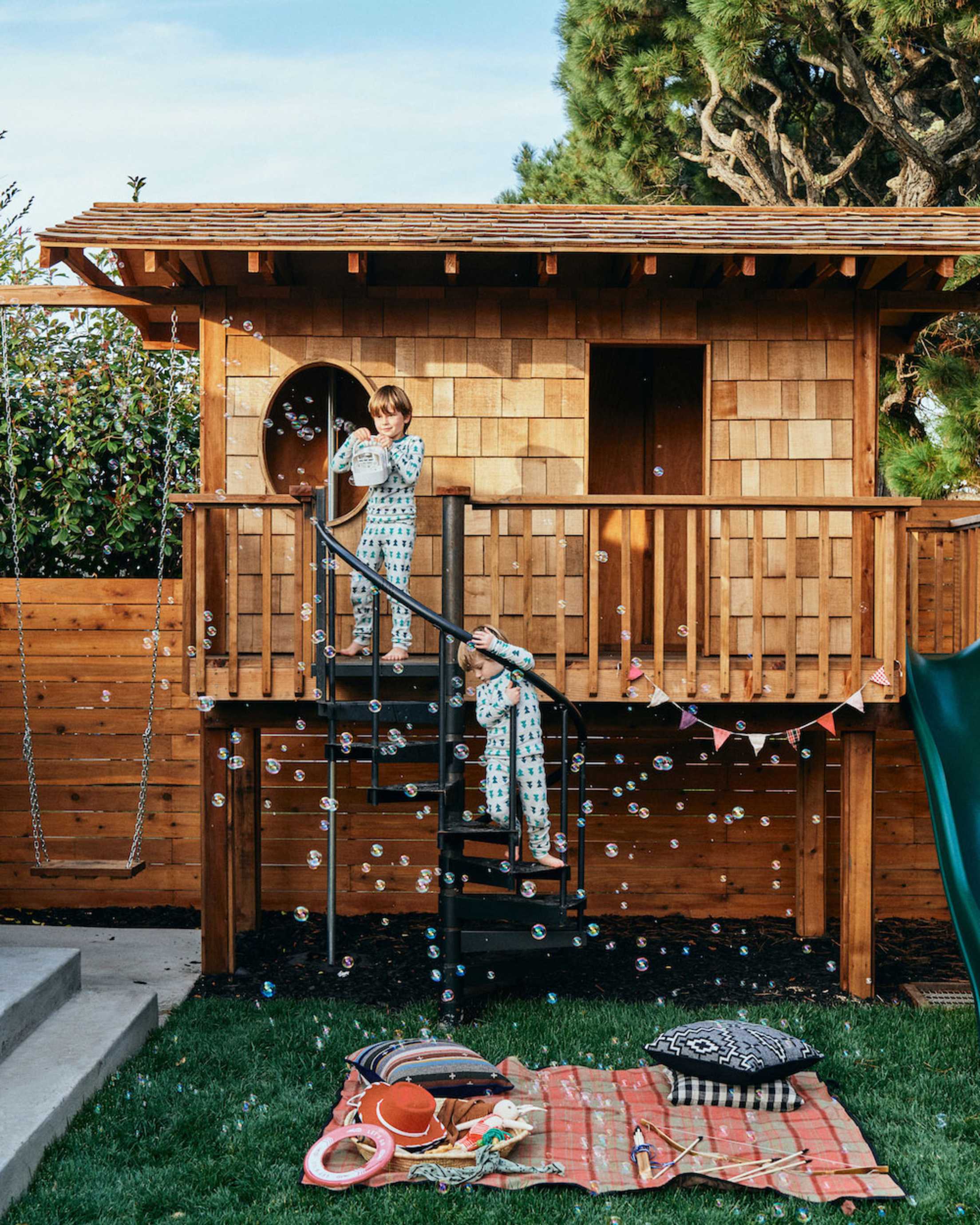
Outdoor play spaces can be an easy pop-up tent or a whimsical fort.
Kid Forts and More
When Sara and Chauncey Brooks made the switch from city dwellers to suburbanites a couple of years ago, an outdoor living space was at the top of their must-have list. The couple enlisted the virtual landscaping company Yardzen to help transform their Corte Madera, California, backyard into a multi functional space with edible garden, pergola-sheltered dining space, a gathering area around the fire pit, and the ultimate kid fort.
Sara, who grew up in the countryside, was adamant that her two young boys have an outdoor destination. So when their playroom was scrapped for a work-from-home office during Covid-19, the whole family was relieved to have the additional play space. Using Yardzen’s plans as a jumping-off point, Sara hired a contractor to build an elevated fort, complete with swing, slide, and deck. She hopes, as they grow up, the boys will use the fort to watch movies, play board games, and maybe even camp out.
While an elevated fort may not be in the cards for everyone, there are some simple ways to enhance outdoor play. Consider a playhouse, which takes up less square footage. My family was gifted a hand-me-down playhouse that we refurbished with sandpaper, primer, and paint, all supplies we had on hand. A simple makeshift mud kitchen can be built out of a few wooden crates, with the addition of cans, milk cartons, and chopsticks as cooking ware. You might even have play props lying around the garage: Pull a tent from your camping supplies and pop it up in the backyard. As the sun sets, kids can watch a movie on a tablet or a small projector like Cinemood. By the light of a camping lantern, even a game of cards feels like an adventure.
Other ideas for outdoor play include tree swings, climbing ladders, and archery sets—my family built a target out of old wood—or bring out the old standbys: giant bubble wands, butterfly and bug boxes, or small garden tools to dig in the dirt.
Office Shed
As the work-from-home dynamic stretched on longer than expected, more people began to look outside the house to create separation between work and home life. In March, Tuff Shed reported its highest revenue month ever, installing nearly 10,000 buildings across the country in a single month. “This past year, we heard from more customers indicating that they planned to convert their Tuff Shed building into a space for a home office, homeschooling area, gym, or hobby and craft space,” says Philip Worth, vice president of marketing for Tuff Shed.
When Mark Risser of Sacramento found out his wife was pregnant, he planned to give up his home office for the baby’s room. With their 1939 bungalow maxed out inside, they looked for options outside. The best one: the 95-square-foot shed that had been built onto their detached garage. Initially, the couple sought bids from contractors in hopes they could add another bathroom, but the estimates were too steep. So they decided to tackle the renovation themselves. They performed the bulk of the work, replacing rotted framing, vaulting the ceiling, adding new drywall and windows, and, with the help of friends, pouring a new concrete floor. Even with a couple of big-ticket items—including hiring an electrician and adding an air conditioning unit for about $1,000—the couple spent under $10,000.
“It’s so nice to have that extra space,” says Risser, who completed the upgrade just a few months before the shelter-in-place mandate. “It’s great to have a formal workspace outside of the house, and my commute is only 20 steps out the backdoor.” Despite the short distance, Riser says his office shed definitely helps put that separation between home and work life. Plus, unlike many of his coworkers, there aren’t any dogs or kids running through the background on his Zoom calls.
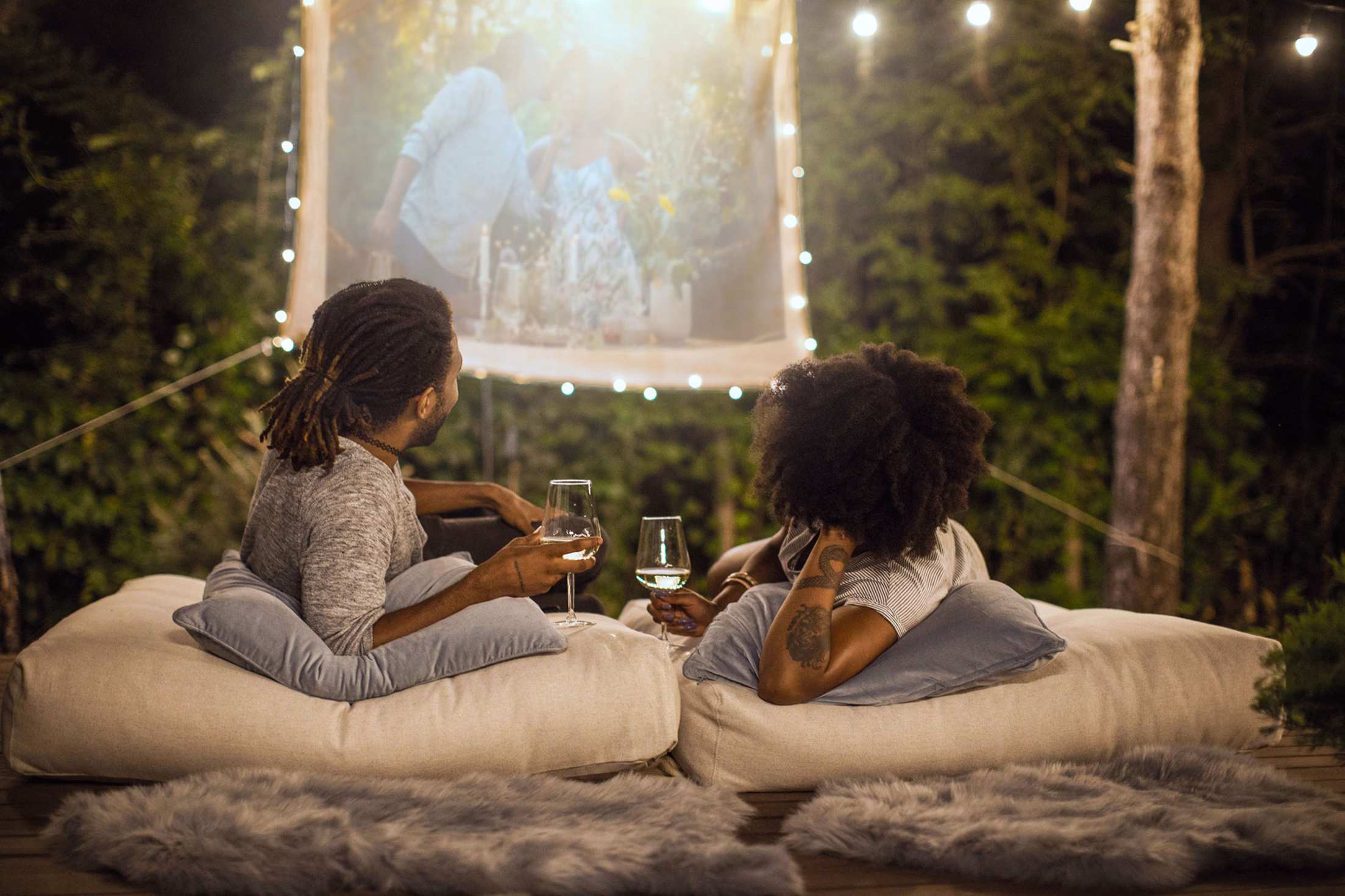
Create an outdoor theater with a portable projector.
Outdoor Theater
Watching a movie outdoors is a quintessential summer activity, and with the availability of projectors at a variety of price points, it’s easier than ever to take family movie night outside.
To get started, research the various projectors out there. There are plenty of small, portable ones for outdoor use, and if you need to connect a Bluetooth speaker for high volume, many are easily compatible. Before you set it up, check your internet performance by streaming a video on a laptop around various locations in the yard. You’ll need strong Wi-Fi in order to stream movies, so invest in a streaming device or a good HDMI cable. You’ll also need a screen, but that can be easily handled: Project directly onto a wall, hang a light-colored sheet, or build your own screen.
In Phoenix, AAA Member Tom Fragala found a projector and screen material at a low price online and decided to build the screen frame himself. “I used PVC pipes as a low-cost alternative, and it’s very easy to piece together and dismantle, then store, when needed. The screen goes to 10-feet wide,” he says. Now, they use it every weekend as family time for himself, his wife, and their two daughters, ages 9 and 10. They’ve watched everything from Willy Wonka & the Chocolate Factory to Star Wars. This summer, he plans to reorient the screen so they can watch movies from their swimming pool, too.
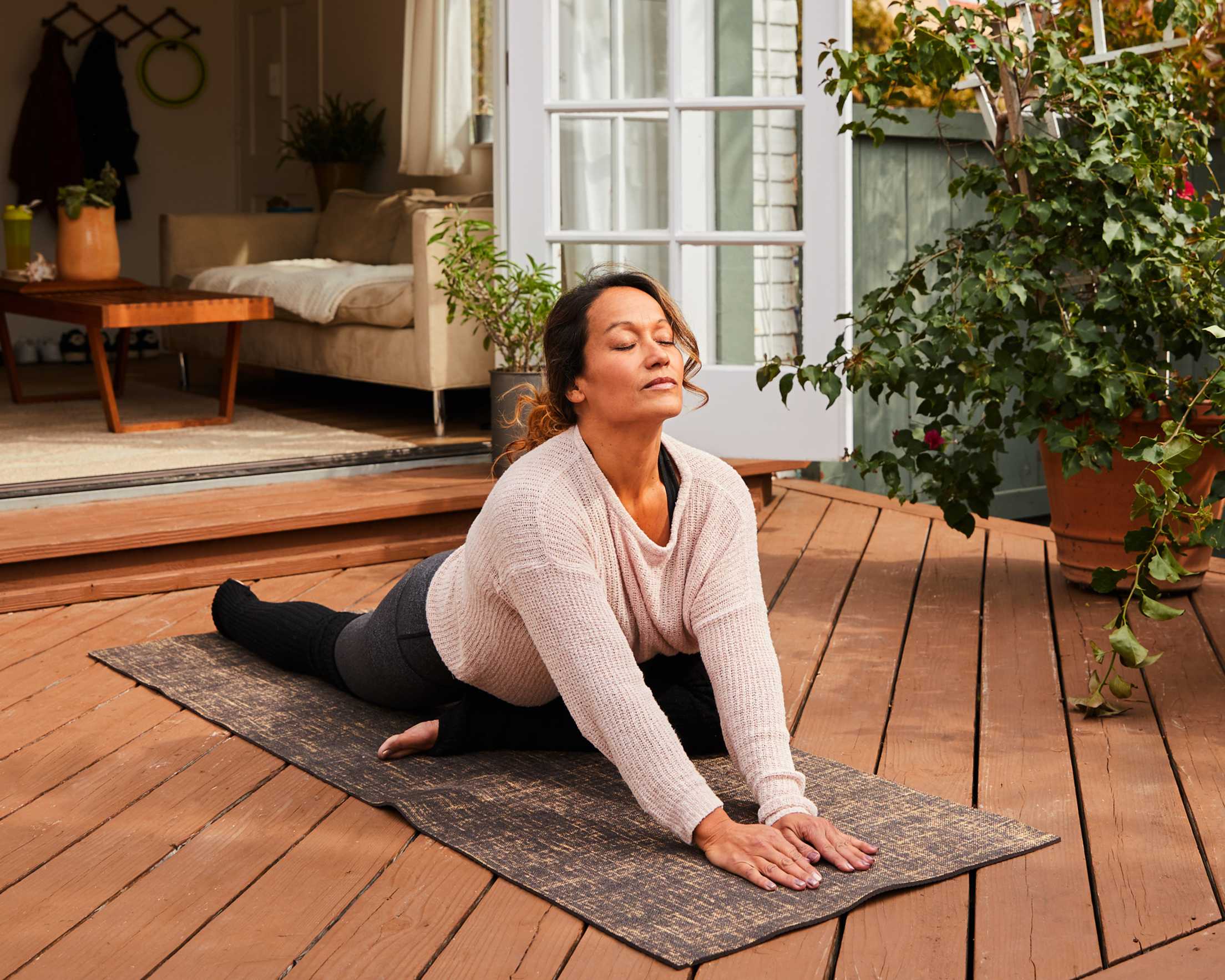
Stretch and exercise to the sounds of nature.
Yoga Deck
Interior and exterior designer Katy Milton isn’t only in the process of designing yoga decks for her clients, she’s building one for herself, too. The San Francisco Bay Area designer says she finds yoga much more grounding outdoors. “I’ve never been good at doing yoga in the house,” she admits. “I’d go into a pose and see dust in places that I realized was another area to clean.”
Outside, the ideal yoga platform is a minimum of four by eight feet, to allow space for movement, and two inches high. Milton recommends building the platform from a rot-resistant wood such as cedar or redwood, which is more forgiving than brick or concrete (even with a yoga mat).
When choosing a location, keep in mind the times of day you might practice yoga, and whether you may be facing the sun. Surrounding the space with greenery is especially calming, says Milton. She suggests planting aromatherapy herbs and flowers nearby, such as jasmine, lavender, mint, and rosemary. If there’s a lot of noise in your neighborhood, bring your earbuds to mitigate external sounds.
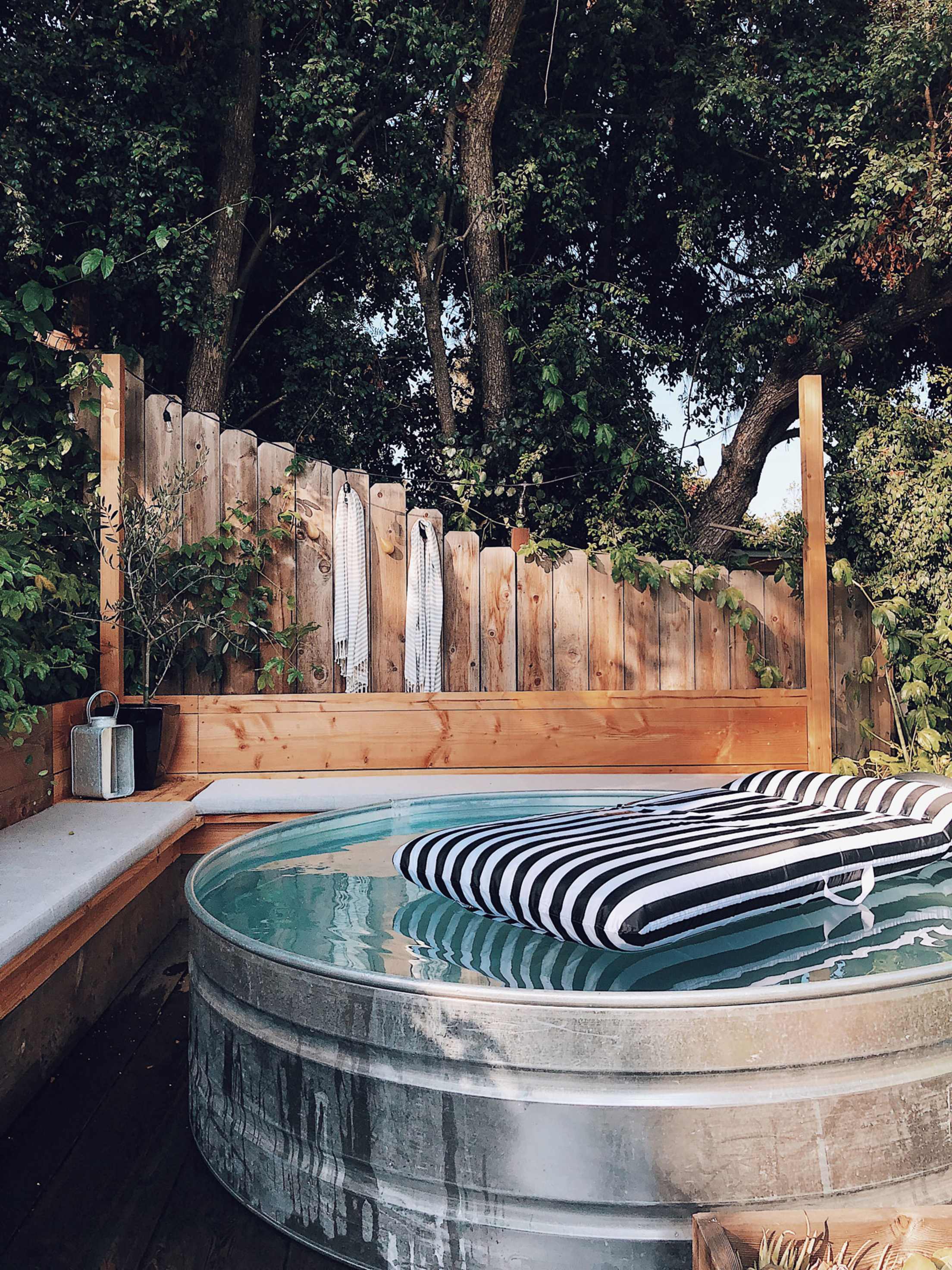
Take a dip in a plunge pool this summer.
DIY Pool
For years, there’s been little in-between when it comes to pools. The options were plastic kiddie, hole-prone inflatable, above ground, and, of course, the traditional built-in (read expensive). Over the last several years, a new durable, budget-friendly option has become more popular: stock tank pools.
The galvanized steel tubs, also known as cowboy pools, are designed to feed and water cattle in wide-open ranch fields. But because they are both sturdy and lightweight, come in a range of sizes, and are relatively inexpensive, they’re an excellent option for cooling down in your own backyard. Spend a little more, and you can add a skimmer, pump, and chlorine float to help keep the water clean. This way, you’re not wasting water, and the refilling hassle each time you want to use the pool. If that cold steel finish isn’t working for you, just add a coat of spray paint to the exterior.
In Southern California, blogger Victoria Smith, aka SF Girl by Bay, designed a lounge area around a stock tank pool. She had L-shaped benches built so that people could sit and dip their toes or, when the water became too cold, pop out and lounge on the sunny upholstered banquette. Overhead, wooden posts allow for a string of café lights, so an evening dip is always an option. The fence behind the stock pool is outfitted with a row of hooks for drying towels in the warm sun. For the final touch, she added a black-and-white striped float that’s perfect for reading or dozing off. In the end, the cost was $2,500—just about priceless on a sizzling Southern California day.
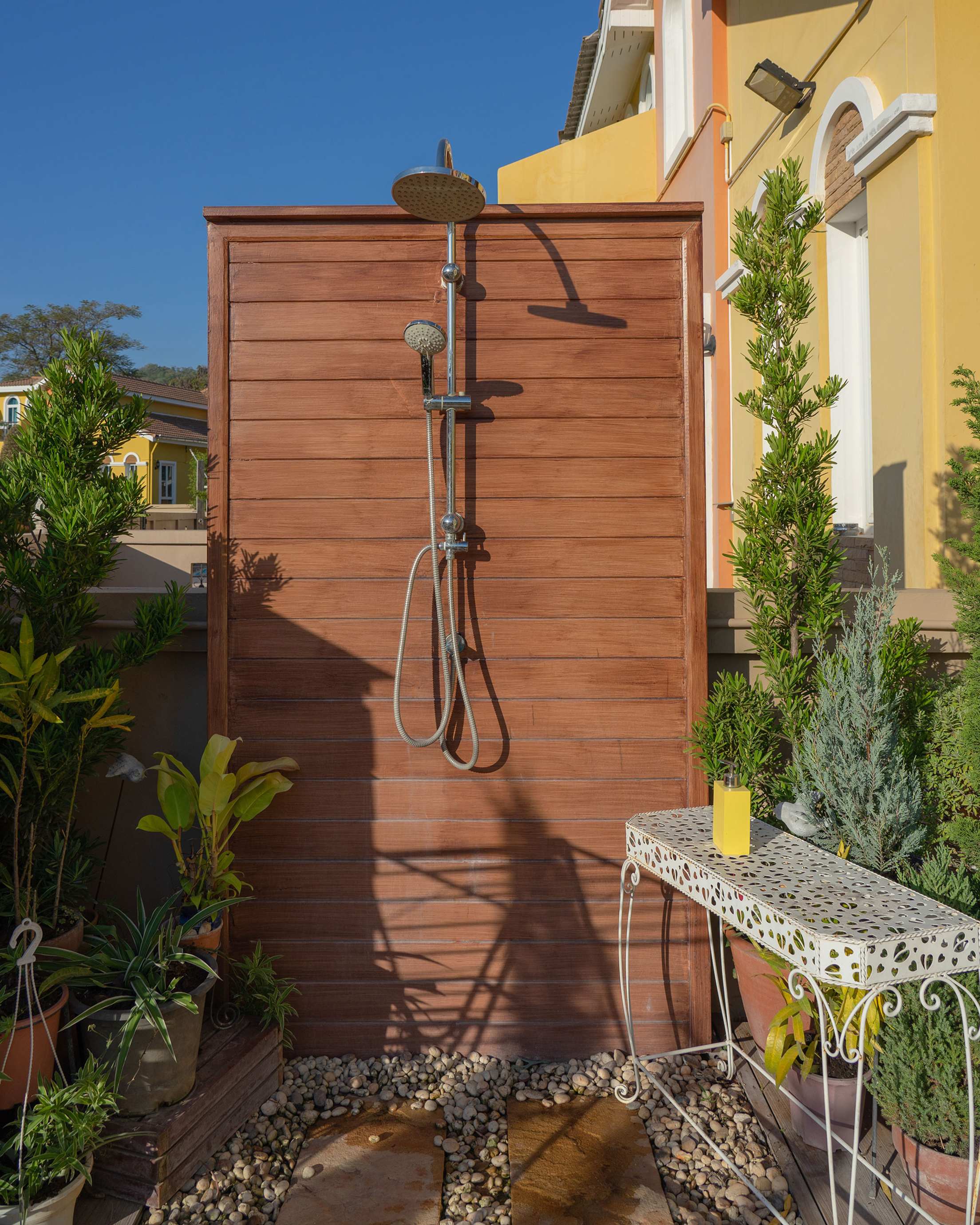
Freshen up outside.
Outdoor Shower
Living in a beach bungalow in Santa Cruz, California, artist Caryn Owen, her husband, and their two teenage boys got a bit tired of tracking sand into their small abode. To fix the problem, they had a private outdoor shower built from wooden posts and corrugated steel, off the entrance to their front yard.
But you don’t have to live on the coast to appreciate the convenience of an outdoor shower. They come in handy after any beach trip, working outside, or even playing in the pool. While outdoor showers are ideally located in a private spot near an exterior entrance, you should also consider their proximity to hot water, which is typically near an interior bathroom or the kitchen. If you live in a warm climate and can do without hot water, you can hook up the shower to any outdoor water spigot. From there, decide how elaborate or simple you want your cleaning station to be.
In Glen Ellen, California, Levi Velvick designed a partially enclosed, horizontal-slate shower. He added a piece of lumber to shelve soap and shampoo; hooks for hanging towels and even greenery complete the picture. If you’re installing a shower in a space that’s paved, you can put down a simple teak mat. If it’s over soil, create a drainage area with pea gravel.
Whether you own or rent your home, protect your personal property with AAA Insurance.